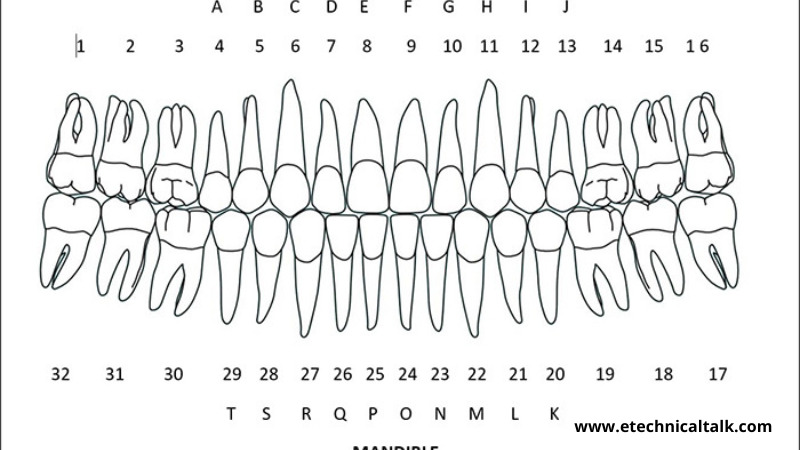Teeth numbers, also known as dental numbering or tooth numbering, are a way of identifying each tooth in the human mouth. There are different systems used to number teeth, but the most commonly used system in dentistry is the Universal Numbering System. This system assigns a unique number to each tooth, with the numbering starting from the upper right wisdom tooth (tooth number 1) and ending with the lower right wisdom tooth (tooth number 32).
Teeth numbers are important in dentistry for a variety of reasons. In this article, we will explore the significance of teeth numbers in dentistry and the different ways they are used.
Teeth numbers are a way of identifying each tooth in the human mouth, which is crucial for effective dental care. Dentists use teeth numbers to diagnose and plan treatments, track the progress of treatment, and communicate effectively with colleagues, patients, and insurance companies. In the case of a cavity in the front teeth cavity, teeth numbers help dentists identify the specific tooth that needs treatment. This information is important in planning the treatment and ensuring that the cavity is properly addressed. Understanding teeth numbers is essential for good oral health and can help patients communicate effectively with their dental care providers.
Diagnosis And Treatment Planning:
Teeth numbers are essential in diagnosing and planning treatments for dental conditions. When a dentist examines a patient’s mouth, they use teeth numbers to identify the teeth that are affected by decay, trauma, or any other dental problem. The numbering system also helps dentists communicate effectively with their colleagues when discussing treatment options.
For instance, if a patient has a cavity on tooth number 3, the dentist can quickly communicate this information to a colleague, who can then provide a treatment plan that addresses the issue.
Oral Surgery:
Teeth numbers are also essential in oral surgery. For instance, if a patient requires a tooth extraction, the dentist will use teeth numbers to identify the affected tooth. Teeth numbers also help dentists identify the location of impacted teeth, which can be important in planning surgical procedures.
Orthodontic Treatment:
In orthodontics, teeth numbers are used to identify the position of each tooth and track its movement during treatment. This helps orthodontists plan the movement of teeth to achieve the desired results. Teeth numbers are also used to track the progress of treatment and ensure that the teeth are moving correctly.
Dental Implants:
Teeth numbers are important in dental implant placement. The dentist uses teeth numbers to determine the location and size of the implant that will replace a missing tooth. Teeth numbers also help dentists ensure that the implant is placed in the correct position and that it matches the surrounding teeth in size and shape.
Charting:
Charting is a process used by dentists to record the condition of a patient’s teeth. Teeth numbers are used in charting to record the presence of cavities, fillings, and other dental treatments. Charting is important in tracking a patient’s dental health over time and identifying changes that require attention.
Communication:
Finally, teeth numbers are important for effective communication between dentists, patients, and insurance companies. Using teeth numbers ensures that everyone involved in dental care is on the same page and understands the specific teeth that are being discussed.
In conclusion, teeth numbers play an essential role in dentistry. They help dentists diagnose and plan treatments, track the progress of treatment, and communicate effectively with colleagues, patients, and insurance companies. Understanding teeth numbers is crucial for good oral health and effective dental care.













